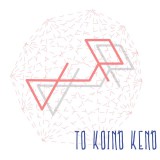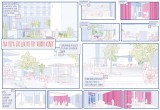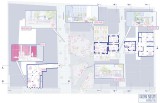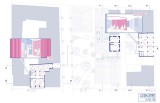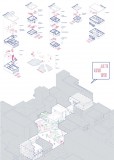Supervisor:
2023
The city has been considered by many researchers and theorists as a living organism that is constantly changing and evolving, leaving visible traces over time, both materially and mentally. Similarly, the natural environment mutates according to the needs and desires of its inhabitants, influencing (in)directly the shape of the city. In terms of architecture, the urban environment is a material reflection of the relationships being developed between public and private elements in a spatial, social, economic, political and cultural level. The urban environment consists of a set of urban edges and boundaries, as defined by Gould (2007), in natural sciences, two terms that explain the way the physical world functions.
Those urban edges and boundaries coexist, separate, connect, unite, collide and play a decisive role in the formation of social relations and of the society in general, as they are the basic concepts on which both the public and private spheres are defined. Thus, depending on the dynamics of the edges and the boundaries, the city can be characterized either as an Open System or a Closed System.
Based on the above perceptions of the urban environment, and according to Sendra (2020), the role of the architect is of particular importance, as the way he designs-intervenes in the urban environment directly and indirectly affects the social relations of citizens. He must function as a mediator, that aims to identify, record, translate and spatially express the needs and desires of citizens, both at the scale of the neighborhood and at the scale of the city as well. In a few words, he must respect the edges, the privacy of citizens and at the same time propose boundaries, in terms of creating fields of meeting and interaction of citizens.
The case study of this diploma thesis is the pedestrian street of Ermou, in the city center of Volos in Greece, focusing on its western part which shows signs of abandonment and degradation. The main objective of the thesis is a design proposal which creates ‘places’ of meeting, gathering and interaction of citizens.
For this purpose, the architectural team deemed it necessary to create research tools for a thorough examination of the field of interest. These tools consist of multi-level maps, which were created after on-site analysis, and an extensive photo archive.
The concluding step of the on-site research was the conduction of a questionnaire to create a spherical image of the views, needs and wishes of pedestrians and locals. Thus, the proposal of the neighborhood redesign is based on the results of the research and the wishes of the users.
This diploma thesis concerns the implementation of a pilot program whose main objective is the utilization and activation of the western part of Ermou, through the conversion of selected empty spaces into common ones. According to the design proposal, these spaces are intended for collective use, creating a Network of Common Spaces, which hosts collective actions and refers to the residents of the neighborhood, but also to the citizens of the city. The result is an alternative version of the existing neighborhood and the city in general, as a place of meeting and interaction of its inhabitants and its users.
